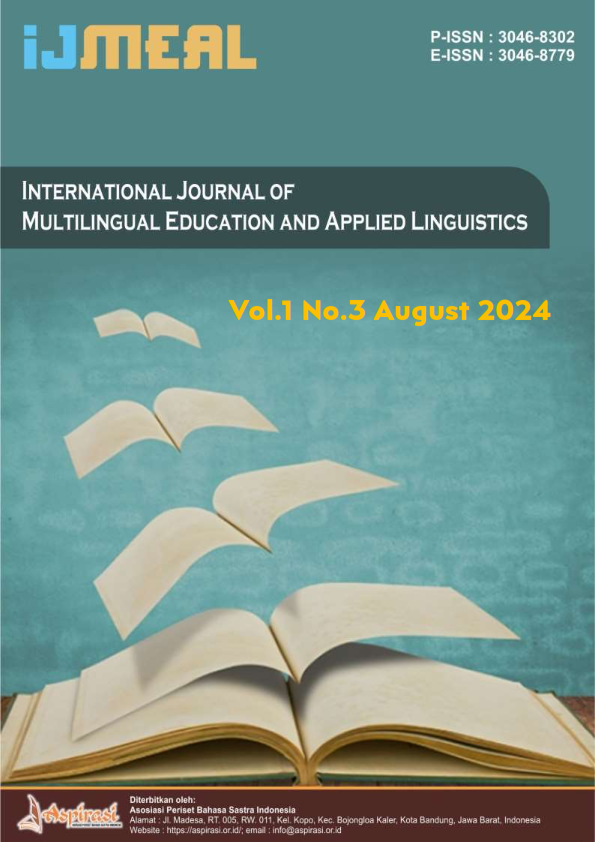Enhancing Local Port Competitiveness: Strategies For Facing Challenges From Public Ports and Special Terminals
DOI:
https://doi.org/10.61132/ijmeal.v1i3.42Keywords:
Local ports, Infrastructure, Efficiency, Connectivity, CompetitivenessAbstract
This research examines the role of local ports in addressing challenges from public ports and special terminals in their vicinity. It focuses on infrastructure, efficiency, connectivity, and competitiveness, using qualitative analysis and a Likert scale questionnaire. Findings reveal that while local ports excel in certain areas, improvements in infrastructure maintenance, operational efficiency, and transport connectivity are needed. Recommendations include investing in infrastructure, improving efficiency, enhancing marketing strategies, fostering collaborations, prioritising sustainability, and focusing on customer satisfaction. Implementing these recommendations can enhance local ports' competitiveness, strengthen their position in the maritime industry, and contribute to regional economic development.
References
Agrifoglio, R., Cannavale, C., Laurenza, E., & Metallo, C. (2017). How emerging digital technologies affect operations management through co-creation. Empirical evidence from the maritime industry. Production Planning & Control, 28(16), 1298–1306.
Berg, H. P. (2013). Human factors and safety culture in maritime safety. Marine Navigation and Safety of Sea Transportation: STCW, Maritime Education and Training (MET), Human Resources and Crew Manning, Maritime Policy, Logistics and Economic Matters, 107, 107–115.
Cascetta, E. (2013). Transportation systems engineering: theory and methods (Vol. 49). Springer Science & Business Media.
Cicek, K., Akyuz, E., & Celik, M. (2019). Future skills requirements analysis in maritime industry. Procedia Computer Science, 158, 270–274.
Comtois, C., & Slack, B. (2017). Sustainable development and corporate strategies of the maritime industry. In Ports, Cities, and Global Supply Chains (pp. 249–262). Routledge.
Fei, J. (2018). Managing human resources in the shipping industry. Routledge.
Gavalas, D., Syriopoulos, T., & Roumpis, E. (2022). Digital adoption and efficiency in the maritime industry. Journal of Shipping and Trade, 7(1), 11.
Hayat, P. (2016). Smart cities: A global perspective. India Quarterly, 72(2), 177–191.
Kortüm, G. (2012). Reflectance spectroscopy: principles, methods, applications. Springer Science & Business Media.
Padgett, D. K. (2016). Qualitative methods in social work research (Vol. 36). Sage publications.
Pallis, P. L. (2017). Port risk management in container terminals. Transportation Research Procedia, 25, 4411–4421.
Plaza-Hernández, M., Gil-González, A. B., Rodríguez-González, S., Prieto-Tejedor, J., & Corchado-Rodríguez, J. M. (2021). Integration of IoT technologies in the maritime industry. Distributed Computing and Artificial Intelligence, Special Sessions, 17th International Conference, 107–115.
Saldana, J. (2014). Thinking qualitatively: Methods of mind. SAGE publications.
Verschuur, J., Koks, E. E., & Hall, J. W. (2021). Global economic impacts of COVID-19 lockdown measures stand out in high-frequency shipping data. PLOS ONE, 16(4), e0248818. https://doi.org/10.1371/journal.pone.0248818
Downloads
Published
How to Cite
Issue
Section
License
Copyright (c) 2024 International Journal of Multilingual Education and Applied Linguistics

This work is licensed under a Creative Commons Attribution-ShareAlike 4.0 International License.





